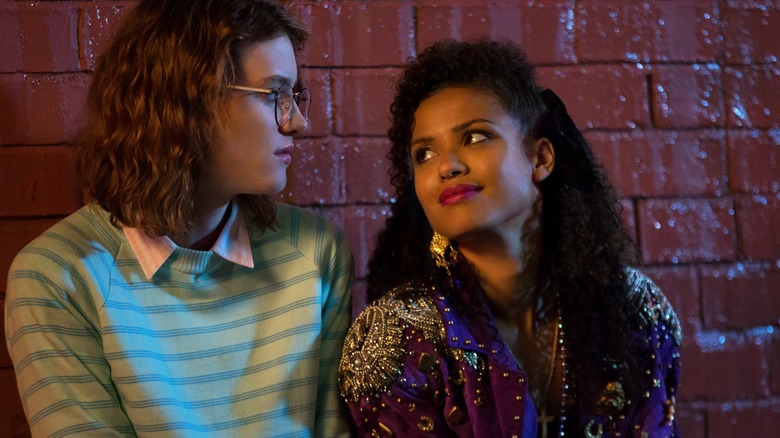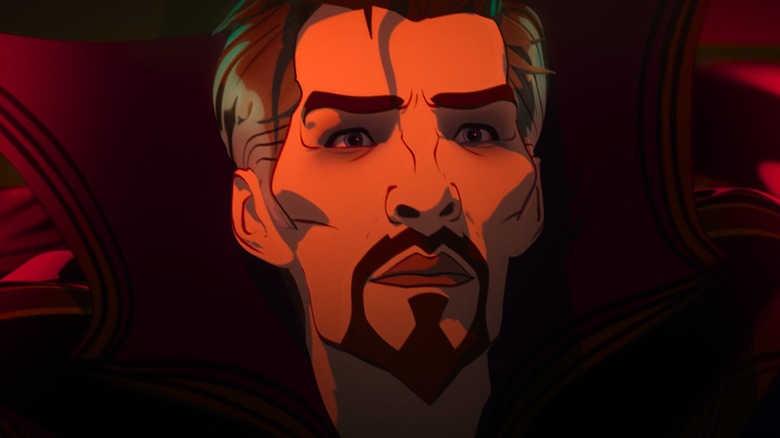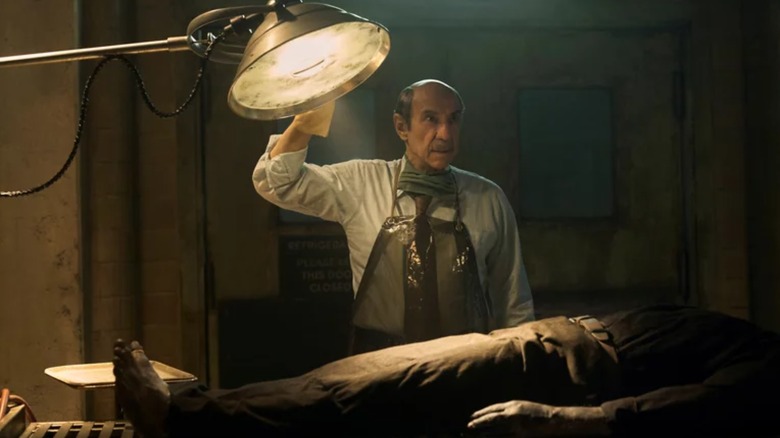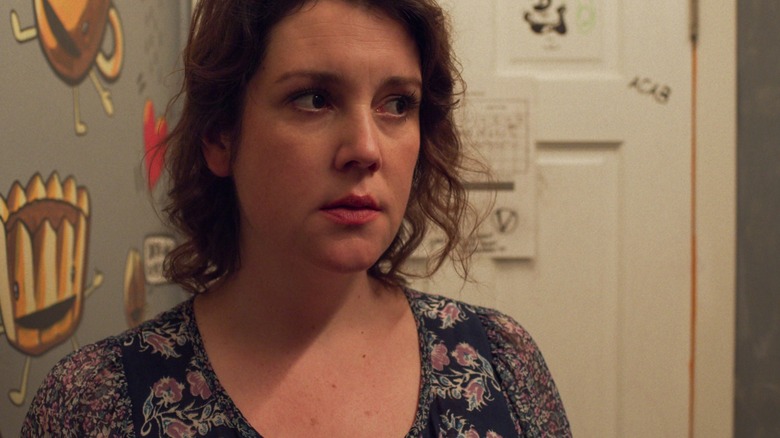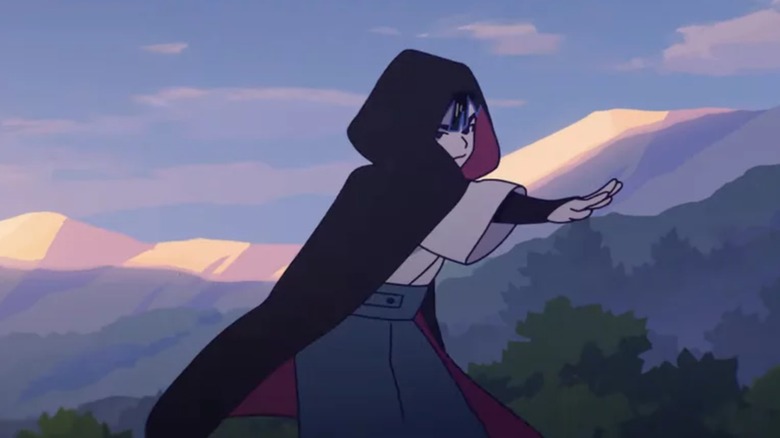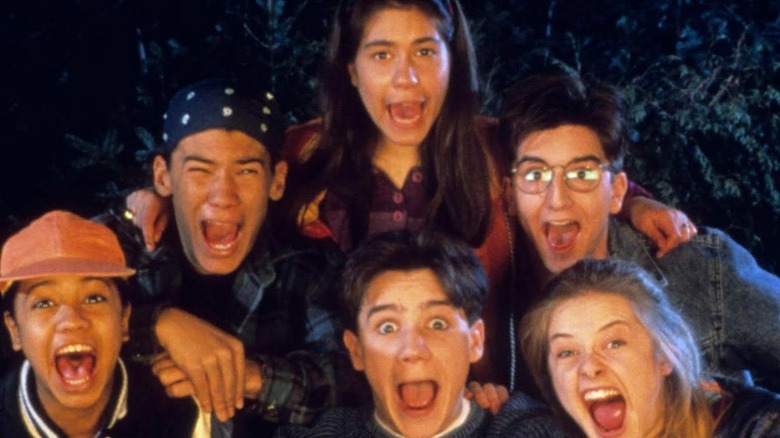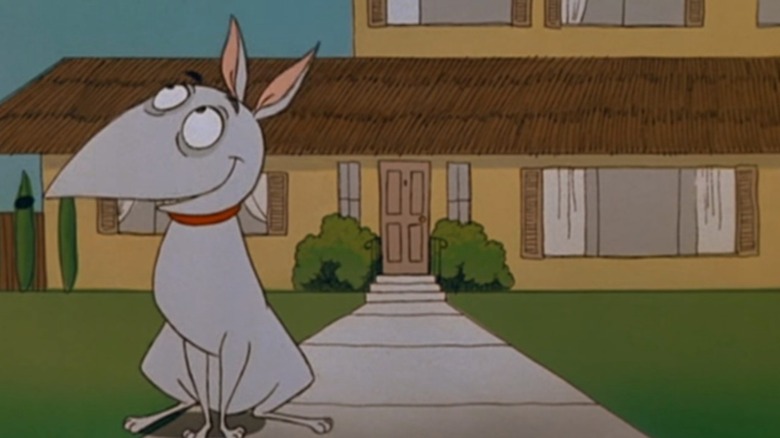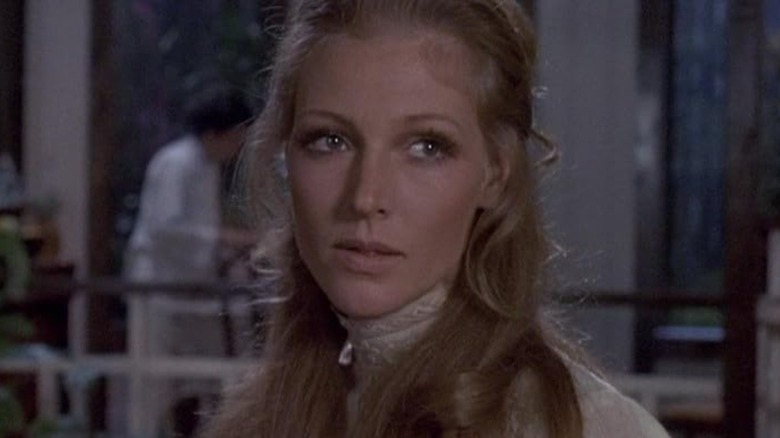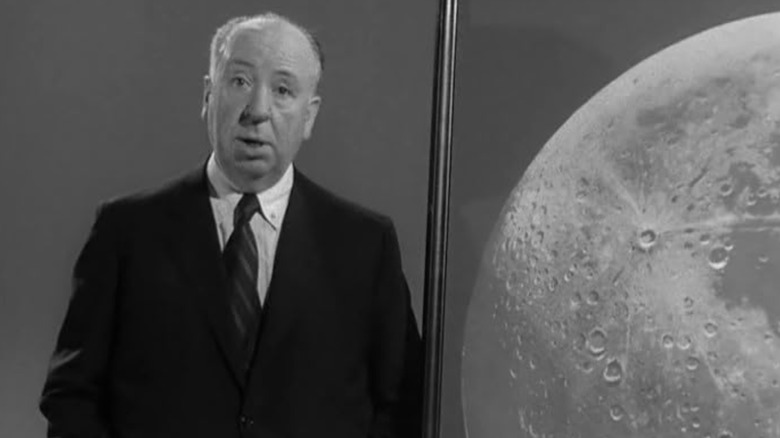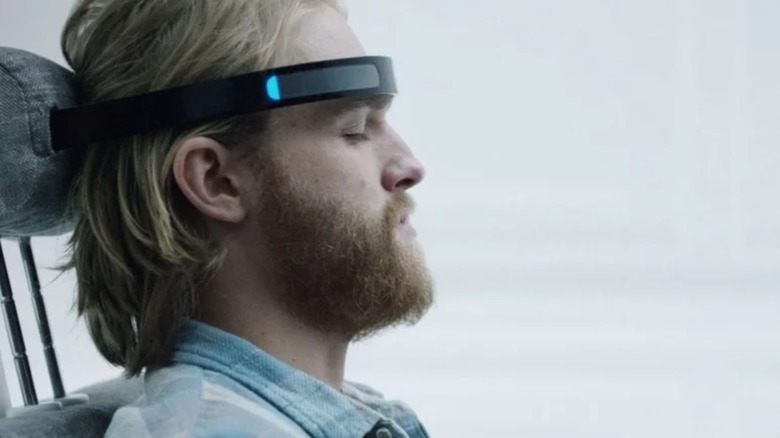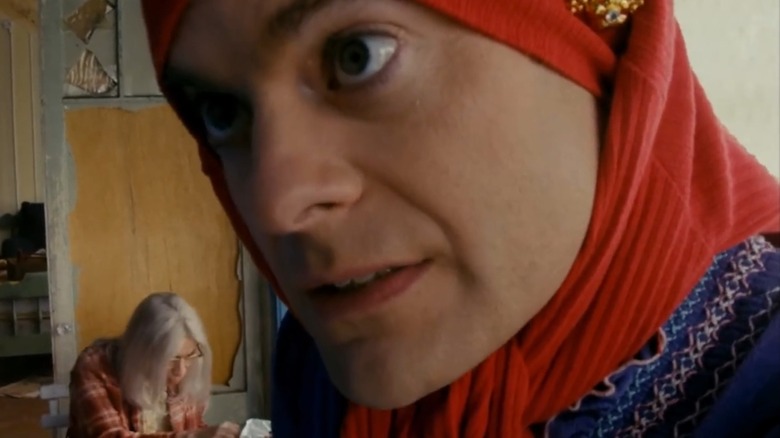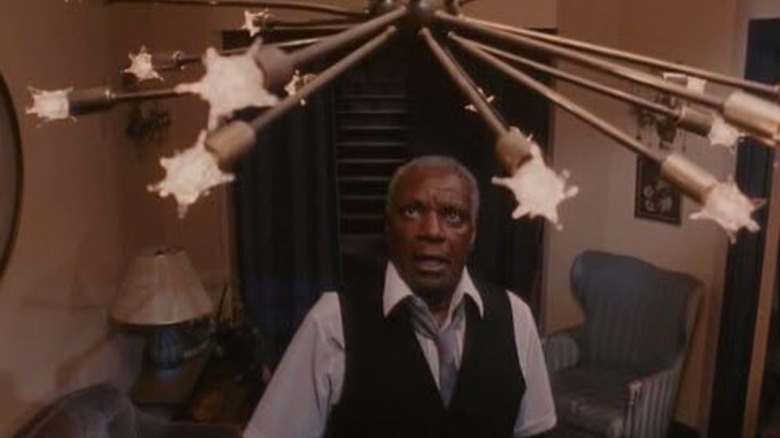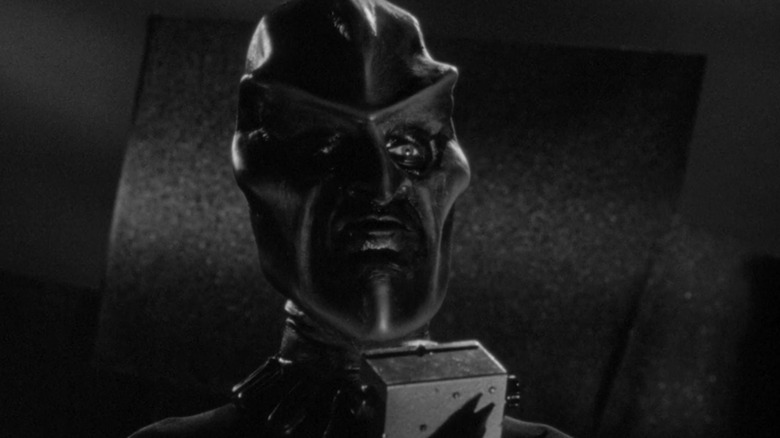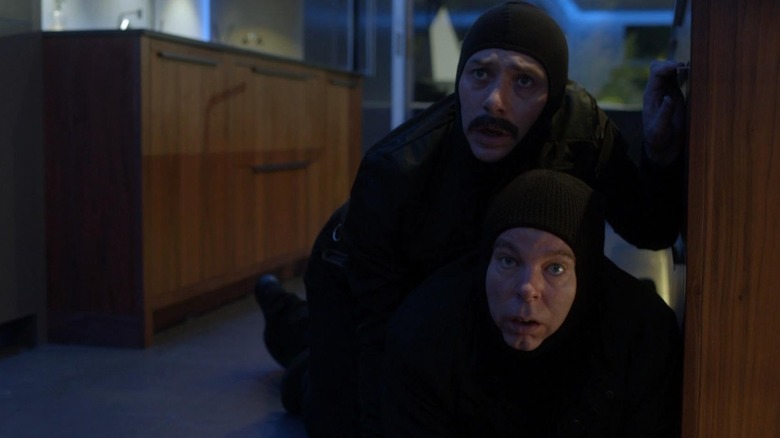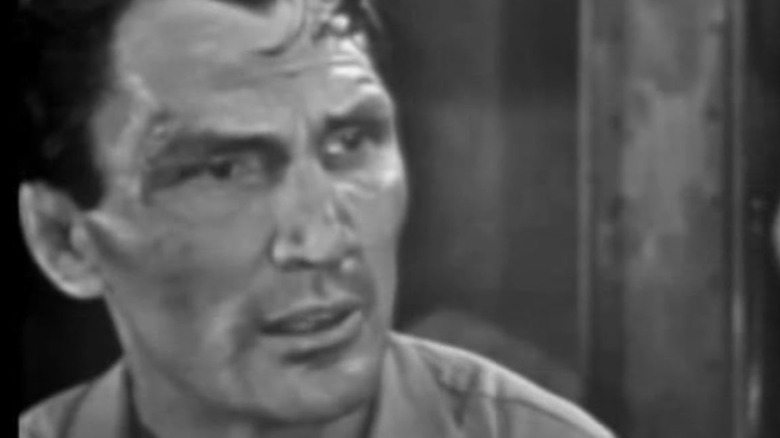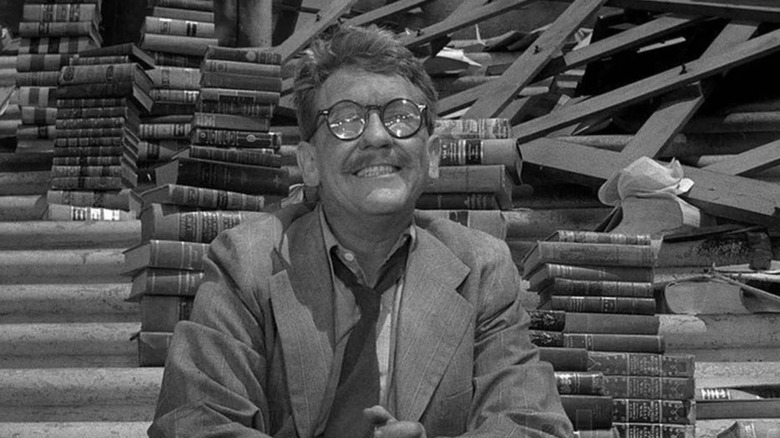The 15 Best Anthology TV Series Ranked
The episode-to-episode TV anthology is an underutilized art form. As multi-season anthologies like "The White Lotus," "True Detective," and "Fargo" continue to dominate cable and streaming, bite-sized anthologies – especially those outside the horror and sci-fi genre – seem to have mostly gone by the wayside. It's an ironic shift, given that the earliest TV was composed almost entirely of anthologies. In the 1950s, shows with titles like "The 20th Century Fox Hour" and "General Electric Theater" made up the bulk of America's viewing schedule, offering a rotating door of talented actors, up-and-coming writers, and stage and radio stars trying their hand at a new medium.
Over half a century later, episodic TV anthologies largely seem to be non-starters, but there are a few excellent exceptions that prove the format still has some life yet. The best anthologies serve both as playgrounds for already-great filmmakers and proving grounds for up-and-comers. They play with form and tone, stretching the limits of the typical TV episode or crafting a simple story so well it takes your breath away. The modern horror and science fiction landscapes, in particular, owe as much to episodic horror TV shows of decades past as they do to the films and books that more overtly shaped the genre.
TV may not be overrun with episodic anthologies anymore, but that doesn't mean there aren't any worth seeking out. We've ranked 15 of the best in a list that spans from 1955 to 2024 and includes shows that focus on romance, sci-fi, adventure, comedy, and a whole heap of horror. Kick up your feet and get the remote ready: we've got a lot to watch.
15. What If...? (2021-present)
Fans who claim the best days of the Marvel Cinematic Universe are entirely behind us clearly haven't experienced the bite-sized geek heaven that is "What If...?" The Disney+ series has dropped two seasons and counting, and been lauded for giving comic book fans what they've wanted from the major franchise for years: meaningful and creative multiverse-spanning stories. While Marvel movies and live-action shows are increasingly stuck tying themselves into knots trying to fit in on a crowded and complex MCU timeline, "What If...?" gets to relax into whatever stories it wants to – just as comic book runs often do – without continuity worries thanks to its alternate timelines.
"What If...?" is far from perfect, but it's a high point in the latter MCU and one of the only true anthology superhero shows. The series earned praise for its J.C. Leyendecker-inspired animation, its sense of fun and versatility, and its voice cast, all of which /Film's Vanessa Armstrong complimented in her review of season 2. "The show takes the multiverse premise and is given the freedom to create fantastical situations that would never occur on Earth-616," Armstrong writes, singling out the episode "What If... Nebula Joined the Nova Corps?" as an impressive "Blade Runner" style noir.
Other series highlights to date include the self-explanatory season 1 chapter "What If...Ultron Won?" and the super-bleak time manipulation story "What If... Doctor Strange Lost His Heart Instead of His Hands?" Plus, we get Captain Carter, Jeffrey Wright's omniscient narrator The Watcher, and Chadwick Boseman's final performance.
14. Guillermo del Toro's Cabinet of Curiosities (2022-present)
Some of the best horror anthologies have a lo-fi, shoestring budget, frankly-looks-like-crap appeal, but "Guillermo del Toro's Cabinet of Curiosities" is the exact opposite. The eight-episode first season of the del Toro-hosted series (fingers crossed it'll return someday!) is gorgeous through and through, from the gnarly practical effects of Vincenzo Natali's "Graveyard Rats" to the colorful cosmic horror of Panos Cosmatos' "The Viewing."
Del Toro serves not just as the tour guide through this story-filled cabinet (which is named after his own collection of curiosities), but as the show's creator and executive producer. It would be easy for the genre master to make his own work front and center, but instead he does the opposite, highlighting the work of filmmakers like David Prior, Ana Lily Amirpour, Catherine Hardwicke, and Jennifer Kent, all of whom have the skills to be doing blank-check projects yet remain (for the most part) underrated.
Two stories pull from the works of H.P. Lovecraft, and there's a Lovecraftian sense of darkness and unease throughout the season, yet the best nooks and crannies of this cabinet of curiosities feel totally fresh. In Prior's terrifying slow burn "The Autopsy," F. Murray Abraham encounters a series of creepy corpses, while Amirpour's absurd, satirical body horror story "The Outside" features Kate Micucci growing increasingly obsessed with a killer skincare routine.
13. Easy (2016-2019)
Joe Swanberg's 3-season Netflix comedic drama often slips through the cracks in conversations about anthologies, but it shouldn't. The series is full of the low-key charm that's to be expected from the mumblecore pioneer who directed movies like "Hannah Takes The Stairs" and "Nights and Weekends," but it's also got the kind of star-studded cast streamer money can buy. Gugu Mbatha-Raw, Orlando Bloom, Aubrey Plaza, Melanie Lynskey, Judy Greer, Zazie Beetz, and Jake Johnson are just a small handful of the actors who appear across the show's 25-episode run.
"Easy" isn't always an easy watch; while the only sure connection between each of its short stories is a Chicago setting and a near-improvised vibe, the series often focuses on romantic relationships, including some that seem to be on the verge of taking their last gasp – or just won't end, even when they clearly should. The characters featured here often yearn for more in their love lives, careers, and friendships, but despite the plethora of broken heart stories, "Easy" typically takes a warm and curious approach to its relationship sagas.
"Easy" teeters on the edge of the true anthology label, as it includes a few characters – including Maron's sad sack graphic novelist and Elizabeth Reaser as a career woman hoping to spice up her marriage – whose stories recur each season. Yet some of the series' best episodes are true one-offs, including "Prodigal Daughter," which sees "Patti Cake$" star Danielle Macdonald turn the table on her rich, churchy parents. As a talky indie anthology about sometimes ridiculous relationship drama, "Easy" isn't for everyone, but it's proof that the format can experiment beyond the borders of well-trodden genres like horror and sci-fi.
12. Star Wars: Visions (2021-present)
The Disney+ era of "Star Wars" has been a bit of a mixed bag. For every truly unique and stunning story ("Andor") there's one that falls flat ("The Book of Boba Fett") or provokes deeply mixed reactions (pretty much everything else except "The Mandalorian"). Among all these hits and misses is "Star Wars: Visions," a transcendent, two-season anthology series that acts as a love letter to both the "Star Wars" universe and the world of animation.
"Star Wars: Visions" stands apart from its competition in a few key ways. The series champions artistic diversity in every sense of the word, with a first season composed of short stories from seven Japanese animation studios (including those that also brought us "Cyberpunk: Edgerunners," "Scott Pilgrim Takes Off," "Ghost in the Shell," and more) and a second with an even more global perspective. The animation teams behind some of the best movies the format has to offer, from "Chicken Run" to "Wolfwalkers," put their own spin on the world of "Star Wars," with dazzling results.
Animation aside, "Star Wars: Visions" also spins off from the major hero stories we know to introduce truly new characters, acting as an antidote to the era of terminally interconnected IP. Each episode has its strengths, but Anya Stanley called Takanobu Mizuno's "The Duel" the best of season 1's offerings, writing for /Film that "for all of its talk about destinies and predetermined paths, "Visions" has a punk rock attitude that insists that we write our own futures and walk our own paths willingly." /Film's Rafael Motamayor also praised the show's versatility in season 2, writing in his review of the Aardman-made short "I Am Your Mother" that the episode is "proof that this universe can fit any mold and medium, it can tell any story and still feel 'Star Wars.'"
11. Are You Afraid of the Dark? (1990-1996)
Ask a former '90s kid to list the formative scares in their life, and there's a good chance one or two especially traumatizing chapters of "Are You Afraid of the Dark?" will make the list. The childrens' show about a group of teens telling scary stories around a campfire may not have the horror bona fides of something like "Masters of Horror" or "Tales From The Crypt" (though it is co-created by "Pendragon" author D.J. MacHale), but it has creativity, cleverness, and some genuinely great thrills and chills.
Arriving years ahead of "Courage the Cowardly Dog" and filling a nerve-jangling niche its cornier cousin "Goosebumps" couldn't, this Nickelodeon show premiered in 1990 and quickly became the primary gateway horror series for young people of a certain generation. Key nightmare fuel episodes include "The Tale of the Dead Man's Float," in which a school swimming pool turns sinister, and "The Tale of the Dream Girl," which turns the story of a boy's dreamy crush into something much more haunting.
"Are You Afraid of the Dark?" thrived on a simple formula: every week, teen campers The Midnight Society told a spooky-ooky story, and whether it was horrifying or just kind of goofy, it safely wrapped up by episode's end, with the frame narrative reminding younger viewers that it was all just a story. The long-running series has spawned two revivals since it first went off the air in 1996, but the original, with guest stars including Melissa Joan Hart, Ryan Gosling, Neve Campbell, and Jay Baruchel, is widely considered the best iteration.
10. Amazing Stories (1985-1987)
The rare post-golden age anthology series that scored big at the Emmys, "Amazing Stories" has something no other series on this list has: Steven Spielberg's name in the opening credits of every episode. Somewhere between "Indiana Jones and the Temple of Doom" and "Empire of the Sun," Spielberg found the time to drop a 45-episode anthology series that was expansive, genre-spanning, star-studded and all-around entertaining.
Of course, Spielberg didn't direct all of "Amazing Stories" (a smorgasbord of talented filmmakers including Clint Eastwood, Martin Scorsese, Tobe Hooper, and more did), but the masterful filmmaker created, produced, and wrote for the series, bringing all-star team members Kathleen Kennedy (who executive produced) and John Williams (who provided the show's music) along for the ride.
Aside from "The Twilight Zone," "Amazing Stories" may be the anthology series with the greatest obvious, lingering influence; it's inspired additional shows ("Family Dog"), video games ("The Dig"), movies ("Batteries Not Included"), and even a series of choose-your-own adventure-style tie-in books. If you're discovering the show for the first time, episode highlights include Brad Bird-created animated gem "Family Dog," Spielberg's World War II story "The Mission," and bizarre horror-comedy outing "Go To The Head of the Class," from Robert Zemeckis.
9. Night Gallery (1969-1973)
A decade after Rod Serling became the endlessly decent heart of American TV with "The Twilight Zone," the writer, creator, and host returned with "Night Gallery," an anthology show that built its worlds not from speculative fiction, but from (often supernatural) horror. While the Serling of years past offered his mind-bending stories as prescient fables about the state of America, he was less inclined to overtly moralize this time around, and the stories of "Night Gallery" weren't afraid to leave audiences with a shiver down their spines.
The show earned its title from its central gimmick, in which – just as del Toro would lead viewers through his Cabinet of Curiosities decades later – Serling commented on tales represented by on-set paintings. The host built his creepy art gallery one tall tale at a time, with his introduction transitioning into stories led by stars like Joan Crawford, Diane Keaton, Vincent Price, Orson Welles, and more.
As with its predecessor, "Night Gallery" often pulled from existing short stories, including some stone-cold classics by H.P. Lovecraft. "Psycho" author Robert Bloch penned an episode, while "Star Trek" star Leonard Nimoy and Roger Corman's artistic partner Daniel Haller both took turns behind the camera. A young Steven Spielberg, meanwhile, directed "Eyes," part of the triptych of stories that became the series' pilot. If you haven't yet visited the Night Gallery, the two Emmy-nominated episodes are a great place to start. Lovecraft adaptation "Pickman's Model" won praise for its excellent creature design, while "They're Tearing Down Tim Riley's Bar" is a profound, sad look back at the sum of one man's life – sans any supernatural elements at all.
8. Alfred Hitchcock Presents (1955-1962)
Master of suspense Alfred Hitchcock was already well into his filmmaking career by the time he deigned to grace television with his presence, but for viewers who caught "Alfred Hitchcock Presents" each week in the '50s and '60s, the stories presented there were worth the wait. Hitch didn't actually direct the majority of the long-running show, but he made a meal out of his presenter role, appearing at the beginning of each episode in his by then famous profile before presenting the week's tale with a quip or two.
At episode's end, Hitch would close out the frame narrative with a wry sign-off, often getting meta about the TV format and his own distaste for the commercials that punctuated his drama. As for the drama itself, it was often thrilling, mean, and darkly funny, a gleefully wicked antidote to the aw-shucks family sitcoms of TV's early years. In "Man From The South," a gruesome yet random Vegas bet threatens to take the fingers of a stranger. In "Lamb To the Slaughter," a woman kills her husband with a leg of lamb she proceeds to cook and serve to the cops.
While much of the TV landscape was populated with faux-cheery families behind white picket fences, Hitch was more interested in the bodies buried in the front lawn. His thrillers came to life with help from excellent directors like Robert Altman, Ida Lupino, and Gene Reynolds, along with a revolving door of old Hollywood guest stars.
7. Black Mirror (2011-present)
Over a decade after its first season aired, "Black Mirror" has been so culturally vital for so long that its place in the horror anthology canon is often questioned – seemingly for the hell of it. While it's fun to hate on popular shows, especially those that are known for a single auteur-like voice (in this case, that of creator Charlie Brooker), there's no denying that "Black Mirror" has delivered some of the single best self-contained episodes of TV this side of Y2K.
From the enigmatic, stomach-churning justice system commentary "White Bear" to the "Star Wars" parody-homage "U.S.S. Callister" to "San Junipero," the quasi-nostalgic queer love story that's considered the show's crowning jewel, "Black Mirror" is able to push past the one-note formula that so many anthologies before it have relied one (setup, twist, curtains) in order to deliver a plethora of multidimensional stories.
The UK-made series (it started on Channel 4 before moving to Netflix) is best known for its underlying ideas about the horrors of technology, but "Black Mirror" is a decidedly human show about machines. At its best, "Black Mirror" has horrifying – and scarily truthful – things to say about grief, loneliness, rage, and other facets of the human condition that are simply exacerbated by whatever technology we have handy. Six seasons in, the series is still challenging itself, having recently introduced its first supernatural horror story under the banner of "Red Mirror."
6. Documentary Now! (2015-present)
Rarely has any parody ever skewered its subject matter as lovingly as "Documentary Now!" The series from comedy dream team Fred Armisen, Bill Hader, Seth Meyers, and Rhys Thomas doesn't just make jokes about some of the greatest (and strangest, funniest, most controversial, and so on) documentaries of all time – it becomes them.
"Documentary Now!" kicked off in 2015 with "Sandy Passage," a "Grey Gardens" homage for the ages. From the moment Bill Hader's reclusive socialite character popped a pair of fashionable sweatpants on her head in place of a scarf, it was clear that this show was about more than laughing at the eccentric people who populate the world of narrative nonfiction. The show's love for documentary filmmaking – and the many weird facets of the human condition often caught on film – shines through in studied performances and an incredible attention to detail. The series only drops new episodes every few years at this point, but it's never flagged in quality or come close to running out of source material to riff on.
Highly rated episodes of "Documentary Now!" (per IMDb) include "Juan Likes Rice & Chicken," a "Jiro Dreams of Sushi" parody that follows a Colombian restaurateur who only serves a single dish, "Waiting For The Artist," a Cate Blanchett-led episode skewering a doc about Serbian performance artist Marina Abramović, and the super-timely "Wild Wild Country" riff "Bats**t Valley." The fact that the show's guest stars (Anne Hathaway! Owen Wilson! Helen Mirren!) are as glossy as some of the doc titles are obscure just makes the whole thing funnier.
5. Tales From the Crypt (1989-1996)
With respect to the other EC comics homages out there (we love you, "Creepshow" and "Tales From the Darkside"!), "Tales From The Crypt" feels like the cornucopia from which all modern horror flows. The HBO series began in 1989 and aired 93 episodes over the next seven years, most of them adaptations of dark and twisted comics from the heyday of genre publisher Entertaining Comics. Our guide through the madness was the Cryptkeeper, a puppeteered rotting corpse with a knack for morbid puns.
The show, too, often possessed a strain of madcap dark humor, valuing entertaining performances, great practical effects, pay-cable content, and absurd twists of fate as much as it did straightforward scares. It kicks off with a doozy of a premiere – Walter Hill's freaky and fantastic death penalty saga "The Man Who Was Death" – and never stops trying new things. Hill and Robert Zemeckis were counted among the show's executive producers, while its director slate included actors (Tom Hanks, Arnold Schwarzenegger, Michael J. Fox) and horror legends (Tobe Hooper, Mary Lambert, William Freidkin) alike.
"Tales From The Crypt" has proven hugely influential, inspiring a radio series, kids shows, and a series of films including Ernest Dickerson's "Tales From The Crypt Presents Demon Knight." A who's who of established stars and up-and-coming actors appear in the series, including Brad Pitt, Ewan McGregor, Whoopi Goldberg, Ke Huy Quan, and Benicio del Toro. Christopher Reeve-led "What's Cookin'," Zemeckis-directed World War I tale "Yellow," and darkly comic haunted house story "Television Terror" are among the show's highest-rated IMDb episodes.
4. The Outer Limits (1963-1965)
As the original run of "The Twilight Zone" was beginning to wind down, a new anthology series appeared on the airwaves, and it was one that proved itself nearly as creative and entertaining as its predecessor. Sci-fi series "The Outer Limits" crash landed on earth in the fall of 1963, created by former playwright and future new age author Leslie Stevens. Stevens' vision of the world was more scientifically minded than Serling's, and episodes of "The Outer Limits" often delved into topics related to space exploration, alien life, and scientific experimentation.
Like so many anthologies that came after it, "The Outer Limits" featured a collection of up-and-coming talents both in front of and behind the camera. Future Spock Leonard Nimoy appeared in an episode about a robot murder trial (props from the sets of "Outer Limits" would also later be reused for "Star Trek"), while "Trek" writer Harlan Ellison cut his teeth penning episodes of this series. Among them is "Demon With A Glass Hand," the show's most-lauded (and perhaps most existentially terrifying) hour, which follows a man with a computerized hand attempting to survive a bleak apocalyptic world.
Like many of the early TV shows on this list, "The Outer Limits" features effects and scientific information that are now outdated, but it remains timely for its foundational takes on science fiction and its bold, twist-filled stories about humankind.
3. Inside No. 9 (2014-present)
If there's one modern series that's successfully captured the balance of horror, dark humor, ambition, and mind-bending twists of fate offered up by anthology classics like "The Twilight Zone" and "Tales From The Crypt," it's "Inside No. 9." Created and written by British comedian-actor duo Steve Pemberton and Reece Shearsmith, "Inside No. 9" has aired eight seasons and counting, and continues to one-up itself even in its latter years.
While most "Inside No. 9" episodes can be described as some version of horror, thriller, or pitch-black comedy, the show's constantly shifting focus makes it evade easy classification. Its first season alone includes an awkward comedy of manners with a grim twist, a Gothic haunted house story, an intense play on "Macbeth," and – in what remains one of the show's high points – a wordless yet uproarious comedy about two cat burglars.
Aside from "A Quiet Night In," would-be fans should check out the devastating drama "The 12 Days of Christine" and the 2018 Halloween special "Deadline," which pays homage to the harrowing UK horror special "Ghostwatch." It's difficult to make something that feels truly original in the genre anthology world, but "Inside No. 9" somehow does it again and again.
2. Playhouse 90 (1956-1961)
"Playhouse 90" may not be one of the more well-known anthologies on this list, but it's certainly among the most influential. Created during the early TV era when anthology series were one of the standard formats for prime time, "Playhouse 90" purposely served as a launching pad for the careers of countless great writers, actors, and directors. The show also bucked the already-emerging trend of a predictable TV show runtime, instead offering 90-minute teleplays that essentially doubled as some of the earliest (and best) TV movies.
John Frankenheimer, Sidney Lumet, and Arthur Penn are among the iconic filmmakers who found work on "Playhouse 90," while writers included a young Rod Serling, "The Outer Limits" creator Leslie Stevens, and "Alfred Hitchcock Presents" scribe James P. Cavanagh, plus "To Kill A Mockingbird" screenwriter Horton Foote and "All That Jazz" writer Robert Alan Aurthur. While many early TV shows took shape from radio plays, "Playhouse 90" had the unmistakable air of theater to it, and the classy cadre of artists to match.
It wasn't just the show's cast and crew that came from the theater: "Playhouse 90" itself was filmed live, without taped recordings for its first year. Entire episodes of the series, along with the cast and crew information to go with them, are no longer available to view, and even the Criterion Collection can only sharpen up the original run's grainy footage so much. As such, "Playhouse 90" maintains a sort of mythical quality; it's rightly celebrated as a vital cornerstone of TV history, but it's awfully hard to watch it and judge for yourself in 2024. You can, however, watch the many film adaptations of some of the show's best episodes, including "Requiem For A Heavyweight" and "Days of Wine and Roses."
1. The Twilight Zone (1959-1964)
Groundbreaking yet grounded, prescient yet beautifully of its era, and altogether mind-boggling, "The Twilight Zone" stands alone as the single best anthology series in TV history. While most of the great shows on this list could've shuffled spots with one another and still felt like they landed in the right place, there was never any spot for Rod Serling's masterpiece besides the top of the heap.
These days, "The Twilight Zone" is most-often referenced for Serling's iconic bookend monologues, or for the show's penchant for a well-executed (and occasionally wacky) twist. Yet "The Twilight Zone" remains powerful not just for its genre influence, but for its boldly beating heart. Serling used the series as a pedestal from which he could speak about issues that still resonate today, including xenophobia and racism, fascism, PTSD, depression, and corporal punishment. The show is unabashedly progressive, yet it couches its deeply humane messaging in stories that seem otherworldly at first, only to reveal themselves with a few twists of fate to be exactly like our own.
"The Twilight Zone" pioneered every nook and cranny of the TV anthology, from the mind-blowing eleventh-hour twist, to the fresh-faced future star in a plum role, to the weaker episodes that are easy to forget because they're usually surrounded on both sides by self-contained masterpieces. The list of astonishing "Twilight Zone" episodes is long, but new fans who want to enter the show's other dimension could do so easily with stone-cold classics like "The Monsters Are Due on Maple Street," "After Hours," and "Will The Real Martian Please Stand Up?"
